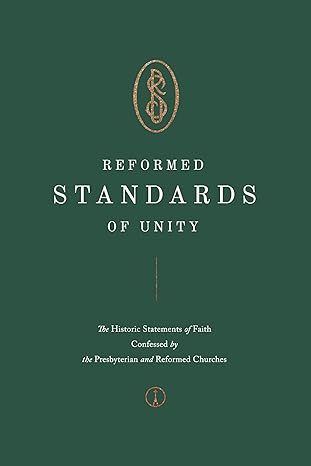A Book Review from Books At a Glance
by Gary Steward
This book very simply presents a collection of early church creedal statements and Reformed confessional documents in one attractive volume. From the early church period, it contains four ecumenical creeds: the Apostles’ Creed, the Nicene Creed, the Chalcedonian Definition, and the Athanasian Creed. The book contains the Westminster Confession of Faith (1647), the Westminster Shorter Catechism (1647), and the Westminster Larger Catechism (1648) as well. Added to this collection are the confessions often referred to as the Three Forms of Unity: the Belgic Confession of Faith (1561), the Heidelberg Catechism (1563), and the Canons of the Synod of Dort (1619). Finally, the book also contains the Second Helvetic Confession (1566).
The book contains very little in the way of explanatory background or introductory material. After a brief introduction by Peter Lillback, this volume presents the confessional documents with little additional material other than the confessional documents themselves. The original Scripture references are maintained in footnotes, with the inclusion of some additional references as well, which are clearly marked off from the ones contained in the original. One could have wished for a topical index or Scripture index at the end, but there is none added. Instead, the publishers have provided an interactive Scripture index of these confessional documents (and more) at a separate online platform found here: www.standards.wts.edu.
The version of the Westminster Confession contained in this volume is the American version adopted by the Orthodox Presbyterian Church in 1936. This version contains significant modifications (first adopted in 1788) regarding the role of the civil magistrate, giving a different view from that found in the original 1647 version. One can find these alterations in chapters 20, 23, and 31. While presenting the American version of the text, the editors have helpfully included the text of the original version as well, using brackets and footnotes to help the reader navigate the alterations and changes made.
The most interesting thing about this collection, in my opinion, is its inclusion of the Second Helvetic Confession, which was drawn up by the successor of Ulrich Zwingli, Heinrich Bullinger around 1566. While perhaps less appreciated today, this confession was the most widely adopted confession of the Reformed churches on the continent of Europe. According to Philip Schaff, “It is scriptural and catholic, wise and judicious, full and elaborate, yet simple and clear, uncompromising towards the errors of Rome, moderate in its dissent from the Lutheran dogmas. It proceeds on the conviction that the Reformed faith is in harmony with the true Catholic faith of all ages, especially the ancient Greek and Latin Church. …[A]s to its theological merits, [it] occupies the first rank among the Reformed Confessions” (Philip Schaff, Creeds of Christendom, 1:394-395). This confession presents a mediating position on the sacraments between the Lutheran and Reformed branches of the Reformation, which was a very divisive issue at the time. It is much more polemical than the Westminster Confession and nearly twice as long. Many in the Reformed tradition are probably less familiar with this particular confession, so its inclusion here is welcomed.
The book is of such a nature that it could easily be presented as a gift book. It is beautifully typeset, bound in a simple cloth/hardcover binding, and capped off with a sewn-in ribbon. The book is constructed clearly with the intention that it will be a volume that people will cherish, reflect on, and regularly return to.
Gary Steward
Colorado Christian University
Dr. Gary Steward is an Associate Professor of History and Dean of the School of Humanities and Social Sciences at Colorado Christian University. He specializes in American political and religious history and has published works on the American Revolution and Christian approaches to social reform in antebellum America.
